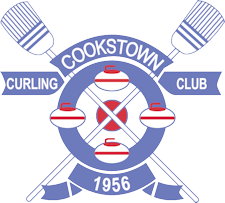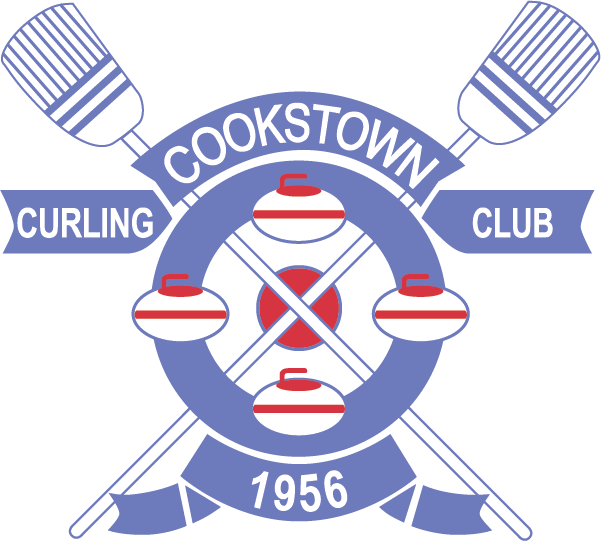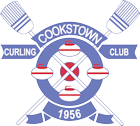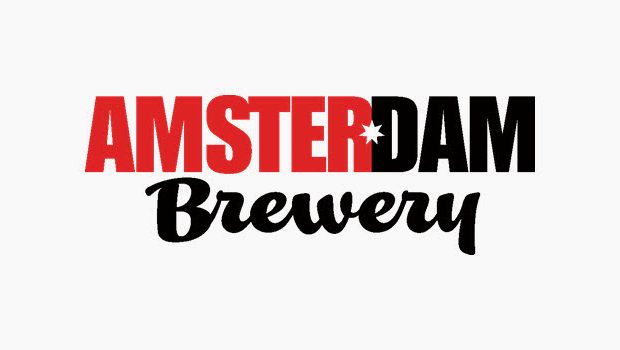Curling Fundamentals:
Curling is a game requiring hand/eye co-ordination – a game of skill, strategy and luck but above all, it is a game of fun. It is a game that can be played by both males and females from the age of 8 to 88. It can be recreational or competitive, depending on how much time you have to devote to the sport.
Equipment:
The only personal equipment required is a pair of curling shoes, a brush and warm, comfortable clothing. The shoes have a special slider on the bottom of one shoe and a soft rubber sole called a gripper on the bottom of the other shoe. Brushes are either made of synthetic material or of hog or horsehair.
Teams:
Each team has 4 players, called Skip, Third, Second and Lead. The Skip is the captain or the leader of the team. The Skip plans the strategy for the team and stands in the far house holding his/her brush to tell the team where to aim their rocks. The Lead throws his/her rocks first, then the Second throws his/her rocks. The Third throws his/her rocks next and holds the brush when the Skip is throwing rocks. It is the responsibility of the Thirds to settle on the score at the completion of each end by looking at where the rocks are lying and to mark it on the scoreboard.
Curling is played on:
A sheet of ice by sliding rocks from one end to a target, called the house, at the far end. When each team has taken its turn, an end has been played. The teams turn around and deliver the rocks back – and keep doing this until many ends have been played. The number of ends varies depending upon the amount of available time and the level of competition – most games last either 8 or 10 ends and between 2 and 21/2 hours. Each player, beginning with the Lead, delivers two rocks in each end.alternately, until all 16 rocks have been delivered, 8 by each team.
The Curling Rink:
The curling rink is long and narrow with a house at each end. The ice is special pebbled ice, which makes it easier for the rocks to slide. The rocks are made of granite and weigh approx. 44 lbs. but with the new no-lift delivery, they are not difficult to throw. Little rocks weighing half as much are available for young children. The rocks used during a game have two different colours of handles to allow each team to know which are theirs.

The house has four different sized circles – the 12′ circle, the 8′ circle, the 4′ circle and the button, which is the small circle in the middle. Sometimes the house is also called the rings. In order to score points, your rocks must be all the way in or just touching the house, which is called biting. Rocks that go over the back line are removed from play as are rocks that don’t go over the hog line.
Common Curling Terms:
- Eight Ender – When one team scores all eight of its rocks in one end
- Guard – A rock which is placed in a position so that it can protect another
- Hack – Foothold in the ice from which the rock is delivered
- Heavy – A rock delivered with greater force than necessary
- Measure – An instrument that measures which rock is closest to the centre of the house or one (the six foot measure) which measures to determine if a rock is touching the circle
- Shot Rock – At any time during the end, the rock closet to the button
- Bonspiel – A curling tournament
- Weight – The amount of speed given to the rock during delivery
- On The Broom – (Up the stick) A rock delivered on target to the Skip’s brush at the far end
- Hit – To remove your rock or an opponent’s rock from play
- Freeze – To bring your rock right up next to your rock or your opponent’s rock
- Tap – To move your rock or your opponents rock a small distance without removing it from play
- Steal – To win an end without last rock advantage.
Glossary of More Common Terms
BACK WEIGHT
A stone thrown with sufficient momentum to reach the back rings. The portion of the 12 foot ring behind the tee line and in the proximity of the centre line.
BACKLINE
The line that runs across the sheet of ice tangent to the back of the 12 foot ring at the centre line.
BITER
A stone that just touches the outer edge of the 12 foot circle and is a potential point.
BLANK END
An end in which no points have been scored.
BLANKING AN END
The strategy by which a team deliberately blanks an end for the purpose of retaining last rock advantage.
BONSPIEL
A curling competition comprised of a number of different events usually played over a weekend.
BRICK
A slang term for the curling stone.
BRIER
The Brier is the Canadian Men’s Curling Championship.
BROOM
A type of device used to sweep the ice in the path of the stone and may be manufactured with straw or synthetic fibers.
BRUSH
A type of device used to sweep the ice in the path of the stone and may be manufactured with hog’s hair, horse hair or synthetic fibres.
BRUSHING
The act of moving a “brush” back and forth on the ice surface at a rapid pace in front of a thrown rock.
BUMPER, OR BACK-BOARD WEIGHT
A lightweight takeout thrown with sufficient momentum to reach the back board at the distant end.
BURNED STONE
A stone in motion touched by a member of either team, or any part of their equipment at which point the stone is removed.
BUTTON
The one foot circle at the centre of the house.
CHIP
To hit only a small portion of a stone.
CHIP AND ROLL, OR HIT AND ROLL
To hit a small portion of a stone and roll the delivered stone to another position.
CLEAN
To lightly sweep or brush in front of a stone to remove any debris.
COUNTER
Any stone in the rings or touching the rings which is a potential point.
DEAD HANDLE
A rock which doesn’t turn or curl on the ice after delivery.
DOUBLE TAKEOUT
A takeout shot that removes two of the opponent’s stones at one time.
DRAW WEIGHT
The momentum required for a stone to reach the house or circles at the distant end.
END
A portion of a game where both teams have completed delivering two stones per player and tallied any possible score.
FAST ICE
An ice condition that allows the rock to slide more easily and efficiently.
FIFTH PLAYER
The substitute or alternate player on a team.
FLIPPED OUT
A stone that is released with poor technique which causes it to be wide of the skip’s broom.
FREEZE
A precise draw weight shot in which the delivered stone comes to rest directly up against a stationary stone.
FRONT RING WEIGHT (Top Twelve)
A stone thrown with sufficient weight to reach the 12 foot circle in front of the T line and at the proximity of the centre line.
FROSTY ICE
Ice that has layer of frost on the surface usually caused by excess humidity.
GUARD
A rock that guards a position sought after or guards a rock already in play.
HACK(s)
The foot-holds at each end of the ice from which the stone is delivered.
HAIR
A bristle from a brush.
HAMMER
The last stone of an end.
HEART
The crest that is given to a ladies team to signify winning a provincial/territorial championship which leads to a national championship.
HEAVY
A stone delivered with more momentum weight than was actually required.
HEAVY ICE
Slow ice. When ice conditions are such that more than the normal amount of momentum is required to produce the desired weight.
HIT
A takeout. Removal of a stone from the playing area by hitting it with another stone.
HOG LINE
A line 10 meters from the hack at each end of the ice. A stone, to be in play, must completely cross the hog line at the distant end.
HOUSE
The rings or circles toward which play is directed.
HURRY
A command given to the sweepers to sweep vigorously.
ICE
The surface area in which a game is played between two opposing teams.
IN-TURN
A rock delivery in which the handle turns in toward the players torso. The rotation applied to the handle of a stone that causes to turn and curl in a clockwise direction for a right handed curler. Counterclockwise for a left handed curler.
INSIDE
A stone delivered between the skip’s broom and the intended target stone or target area.
JUNK
Rocks that are in play but useless for point score and creates an effective shield against any points taken.
KEEN ICE
A stone delivered with less than the weight required to successfully complete the desired shot.
LEAD
The first player to throw the first and second rock for a team.
MISSED THE BROOM
Thrown stone was off target.
NARROW
A stone delivered between the skip’s broom and the intended target stone or target area.
OUTSIDE
A stone delivered opposite side of the skip’s broom and the intended target stone or target area.
OUT-TURN
The rotation applied to the handle of a stone that causes to turn and curl in a counter-clockwise direction for a right handed curler.
OVER THE HOG LINE
A stone that is released from the curler’s hand after reaching the hogline at the end of delivery.
PEBBLE
A small bead of ice on the ice surface caused by the sprinkling of water.
PEEL WEIGHT
A take out shot that removes a stone from play and the delivered stone also rolls out of play by thinly hitting the stationary target rock.
PORT
An opening between two stones that is just large enough to allow passage of another stone.
RAISE
A deliberate bump of a stationary rock into further play by a delivered rock.
READING ICE
The skill by which the skip anticipates the amount a stone will curl relative to the weight required.
RINGS
The circles towards which play is directed.
RINK
Can either be a reference for a “team” or the building in which the game is played.
ROLL
The movement of a curling stone after it has struck a stationary stone in play.
RUN
Small dips or hollows in the ice that restrict the stone from curling in its intended path.
RUNNER
A take out shot that travels very fast.
SECOND
The player after the ‘lead’ – usually delivers the third and fourth rocks.
SHEET
The specific playing surface upon which a curling game is played.
SHOT ROCK
At any time during an end, the stone which is closest to the button.
SKIP
The player who determines strategy, reads the ice and directs play for his team. Generally the skip delivers the last pair of stones for his team in each end.
SLOW ICE
Heavy ice. Ice that requires more momentum than normal to produce the required amount of weight.
SPARE
An alternate player or substitute.
SPINNER
A stone that is released and rotates far too many times as it travels down the sheet.
SPLIT-RAISE
A stone that raises another stone into the rings and rolls in itself.
STRAIGHT HANDLE
A stone that is released without any rotation applied to the handle at release.
SWEEPING
The action of moving a broom or brush back and forth in the path of a moving stone.
SWINGY ICE
Ice conditions which cause the stone to curl a greater distance than normal.
TAKE OUT
The action of hitting a rock out of play, usually an opposing team’s rock.
TAP (TAP BACK)
A slight movement of a rock by hitting one rock against another for strategic play.
TEE LINE
The line that passes through the centre of the house that runs at right angles to the centre line.
THIRD, VICE-SKIP OR MATE
The third player on a team to throw two stones in each end, usually the fifth and sixth rocks. Generally this player acts as the skip when the skip is delivering his/her stones and assists with shot selection decisions.
TOURNAMENT OF HEARTS
The Canadian Womens Curling Championship.
TURNED IN
A stone which, at release, is directed toward the target or target area and not directly at the skip’s broom.
WEIGHT
Velocity of a delivered rock.
WICK
To hit only a small portion of a stone.
WICK AND ROLL
To hit a small portion of a stone and roll the delivered stone to another location.
WIDE
A stone that is delivered to the opposite side of the broom than the target stone or target area.
WRECKED SHOT
A shot that accidentally wicks off a stone in front of the house.














